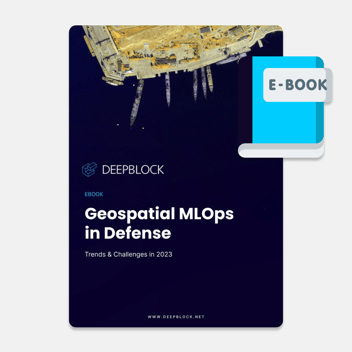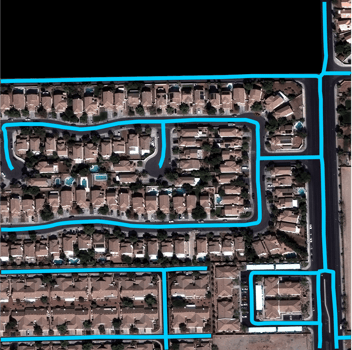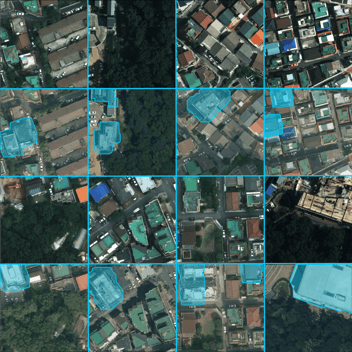How Geospatial MLOps is Revolutionizing the Defense Industry.
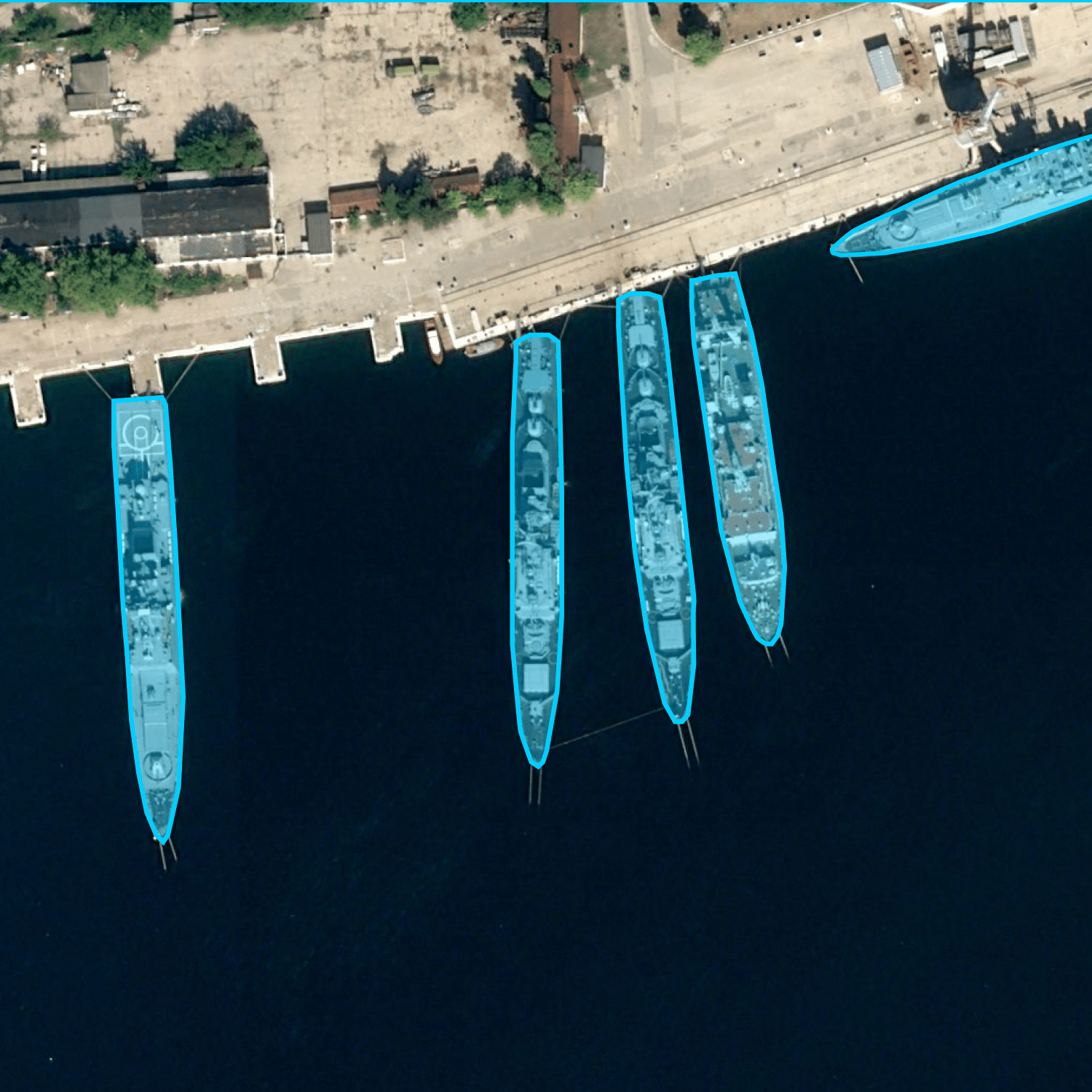
The defense industry is in the midst of a revolution. Geospatial Machine Learning Operations (MLOps) is changing the way that defense agencies analyze and process geospatial data, providing unprecedented insights and greater situational awareness. In this article, we will explore how geospatial MLOps is revolutionizing the defense industry, what is its role and benefits, and what are the challenges of implementing it.
[Ebook] Geospatial MLOps in Defense: Trends and Challenges in 2023
Download our latest Ebook to know more about the adoption of Geospatial MLOps in defense and the challenges that go with it. This Ebook sums up the research and industry know-how of Deep Block experts and explores the current trends and challenges associated with the adoption of Geospatial MLOps in the defense sector.
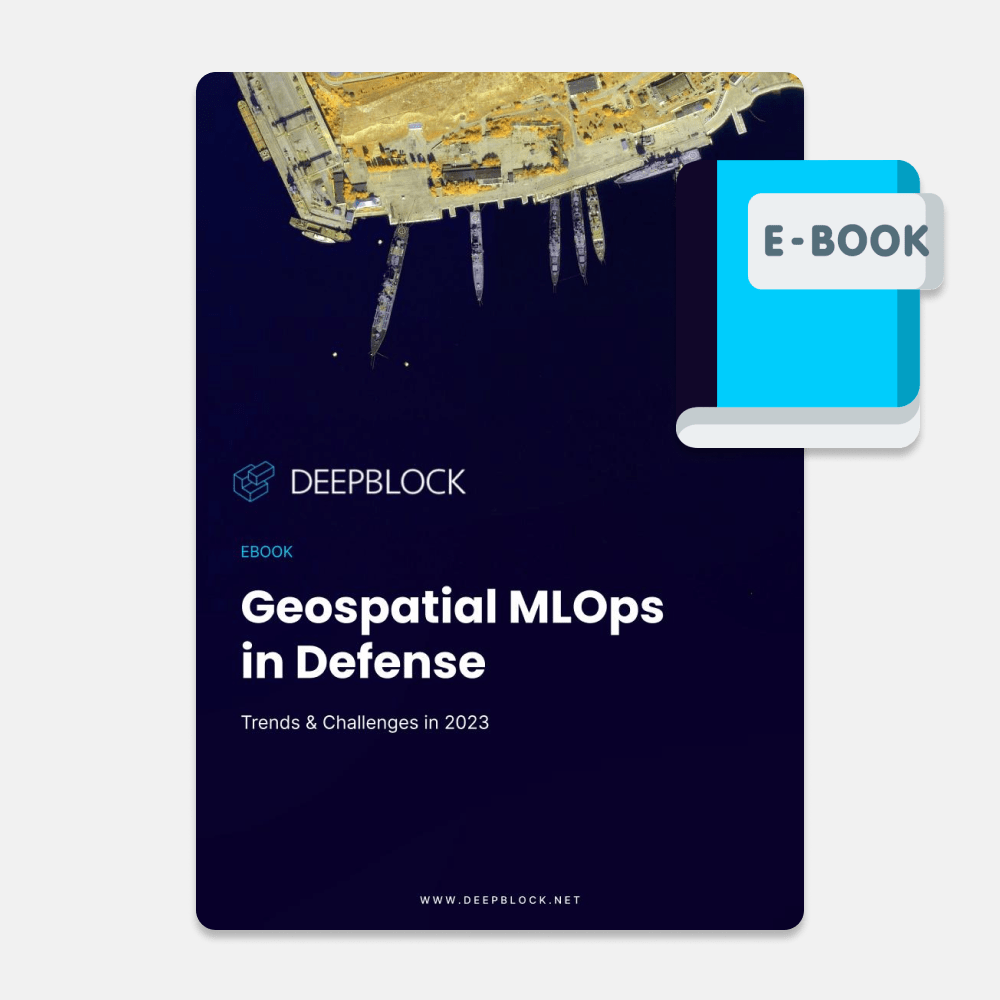
What is Geospatial MLOps?
Geospatial technology is the use of location data to solve problems and answer questions. It encompasses everything from GPS tracking and satellite imagery to geocoding and spatial analysis. Geospatial data can come from a variety of sources, including satellites, drones, sensors, and other devices. Machine Learning Operations (MLOps) is the practice of automating machine learning workflows, from data preparation to deployment.
Geospatial MLOps is the intersection of these two fields, combining geospatial technology with MLOps to improve the accuracy and efficiency of location-based models, transforming the way that military organizations approach geospatial data analysis. By automating the process of analyzing, processing, and visualizing location data, analysts can streamline the identification of patterns, trends, and anomalies in geospatial data, providing a level of accuracy and insight that was previously impossible.
The use of geospatial MLOps in defense is becoming increasingly common, especially in Intelligence, Surveillance, and Reconnaissance (ISR). Armed forces are using this technology to gain a more comprehensive understanding of the battlefield, identify potential threats, and monitor the movements of enemy forces.
The growing role of Geospatial MLOps in ISR.
The defense industry has always been heavily reliant on geospatial data since the 19th century. Back then, maps and aerial photos were used in military campaigns to help officers gather intelligence about the terrain, spy on strategic sites, as well as gain awareness about the position and movements of enemy troops.
Then, during the Cold War, geospatial data was used extensively for reconnaissance and surveillance. With the emergence of satellites and other advanced technologies, analysts could collect massive amounts of geospatial data, providing new opportunities for situational awareness and decision-making.
Recently, the Defense industry has jumped onto the machine learning and artificial intelligence bullet train and taken geospatial data to a whole new level. In its tracks, Geospatial MLOps technology providers have emerged as the new powerhouse solution for ISR. Indeed, this computer vision and deep learning experts are leveraging state-of-the-art intelligence artificial algorithms to gain even greater insights from geospatial data.
For Gwihwan Moon, CEO of Omnis Labs and Creator of Deep Block, one of the most exciting developments in geospatial MLOps is the use of deep learning algorithms for object detection and identification:
"These algorithms are like the commando squad of the geospatial MLOps world, capable of identifying objects in geospatial data with incredible accuracy. Thanks to these advanced algorithms, military personnel can spot enemy vehicles or other threats with lightning-fast precision."
Gwihwan Moon, CEO of Omnis Labs and Creator of Deep Block
But that's not all. Geospatial MLOps companies are also integrating real-time data streams into their platforms, pulling in data from a wide range of sources, including satellite imagery, ground-based sensors, and even social media feeds. With this real-time data, defense agencies can stay on top of events as they happen, responding proactively and effectively to changing situations.
Finally, Geospatial MLOps companies are working hard to make geospatial data analysis more accessible and engaging for defense personnel. They're developing user-friendly interfaces that make it easy, even for non-experts, to access and analyze geospatial data quickly and efficiently. Some geospatial MLOps companies are even using gamification techniques to turn data analysis into a fun and exciting experience.
In short, geospatial MLOps companies are paving the way for a new era of geospatial data analysis in the defense industry. As military organizations all over the world continue to push for new ways to stay ahead of the game, geospatial MLOps will undoubtedly play a pivotal role in shaping the future of defense.
Benefits of Geospatial MLOps in Defense.
When it comes to defense, the benefits of geospatial MLOps are endless. These include:
- Situation awareness on steroids: Geospatial MLOps provides real-time insights into the location and movement of targets. This allows analysts to quickly and accurately assess the situation, making it easier to plan and execute operations.
- Bullseye targeting: By analyzing geospatial data, intelligence analysts can identify patterns and predict the movements of targets. This makes it easier to target them, increasing the chances of a successful operation.
- Fast decisions for faster results: Geospatial MLOps provides real-time insights, making it easier for defense agencies to make decisions quickly. This can be particularly important in fast-moving situations, where a delay in decision-making can have serious consequences.
- Operational efficiency on overdrive: Geospatial MLOps automates the process of analyzing data, reducing the time and resources required to gain insights. This can improve operational efficiency and reduce costs.
Examples of Geospatial MLOps in Defense.
Geospatial MLOps is a rapidly growing field in the defense industry, with many applications across different domains.
- Target Recognition: Geospatial MLOps algorithms are used to analyze satellite and drone imagery to identify targets on the ground, such as vehicles or weapons caches. This enables faster and more accurate targeting by military forces.
- Maritime Domain Awareness: With thousands of vessels on the high seas at any given time, monitoring maritime activity can be a daunting task. Geospatial MLOps is making this challenge easier by using machine learning algorithms to analyze data from satellites, drones, and other sources. By identifying patterns in vessel activity, IMINT (Image Intelligence) analysts can more easily detect and deter threats, such as piracy and smuggling.
- Intelligence Analysis: Military organizations are constantly gathering intelligence from a variety of sources, including signals intelligence, human intelligence, and open-source intelligence. Geospatial MLOps can be used to analyze this data and identify patterns that might otherwise be missed. By doing so, commanders can gain new insights into the activities of adversaries and make more informed decisions.
- Mission Planning: Planning military operations is a complex and time-consuming process. Geospatial MLOps can help make this process faster and more efficient by providing real-time insights into the location and movements of targets. By doing so, mission planners can plan and execute operations more quickly and with greater accuracy.
- Border Security: Geospatial MLOps can be used to monitor borders and detect intrusions in realtime, providing faster response times to potential security threats. This is particularly important in border areas that are difficult to monitor using traditional surveillance methods.
- Terrain Analysis: Geospatial MLOps algorithms can analyze satellite imagery and geospatial data to identify terrain features such as hills, valleys, and waterways. This information is crucial for military planners to develop effective operational plans.
Challenges in Implementing Geospatial MLOps in Defense.
While geospatial MLOps has the potential to revolutionize the defense industry, there are several challenges in implementing this technology. These challenges include:
- Data Quality: The quality of data is crucial in geospatial MLOps. The accuracy and completeness of geospatial data can have a significant impact on the insights gained from analysis. Analysts must ensure that the data they are using is accurate and reliable, which can be a challenge when dealing with large volumes of data.
- Data Integration: Another challenge in implementing geospatial MLOps in defense is data integration. Defense agencies often use a variety of different systems and platforms to collect and store geospatial data. Integrating these systems and platforms can be a complex process, requiring significant resources and expertise.
- Technical Expertise: Geospatial MLOps requires significant technical expertise, particularly in the areas of machine learning, data analytics, and artificial intelligence. Defense agencies must have the right expertise in-house or work with external partners to implement this technology effectively.
- Security and Privacy: Geospatial data can be sensitive and confidential, making security and privacy a significant concern. Defense agencies must ensure that their geospatial MLOps systems and processes are secure and comply with relevant privacy regulations.
Conclusion
Geospatial MLOps is revolutionizing the defense industry, providing new insights and greater situational awareness. This technology is enabling defense agencies to quickly and accurately process large volumes of geospatial data, making it easier to plan and execute operations. While there are challenges in implementing geospatial MLOps, the benefits are clear, and the technology is set to play an increasingly important role in the defense industry in the coming years. As geospatial MLOps continues to evolve, we can expect to see even greater opportunities for situational awareness, decision-making, and operational efficiency in the defense industry.



